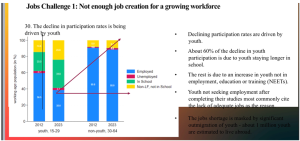
By Senyo ADJABENG
Employment contracts serve as the foundation of the employer-employee relationship, outlining rights, responsibilities, and expectations for both parties.
However, despite their importance, employment contracts can also be a source of disagreements when terms are ambiguous, breached, or misinterpreted.
These disagreements can lead to legal disputes, financial losses, and reputational damage for both employers and employees. Common disputes arise from ambiguous language, unpaid wages, wrongful termination, misclassification of workers, and disagreements over intellectual property or non-compete clauses.
These disputes often lead to costly legal battles, reputational damage, and decreased workplace morale. To minimize risks, businesses need to draft precise contracts, maintain open communication, and implement alternative dispute resolution methods.
By proactively addressing potential issues, employers and employees can foster a more stable and productive work environment while avoiding the financial and legal consequences of contractual disputes.
This article explores the nature of employment contracts, common sources of disputes, and the consequences that arise from contractual disputes.
By understanding these dynamics, businesses and employees can take proactive measures to mitigate risks and foster a more harmonious workplace within the context of managing HR Risks effectively.
Different types of contracts suit various employment scenarios, depending on factors like job nature, duration, and legal requirements.
Types of Employment Contracts
Permanent (Full-Time) Employment Contracts are used when hiring employees for ongoing, long-term roles. They are often appropriate for positions requiring stability and continuous commitment (e.g., managerial, administrative, or core operational roles). Permanent Contracts have no fixed end date – employment continues until resignation, termination or retirement.
They entitle employees to full benefits including health insurance, retirement plans, and paid leave etc. Typically they include notice periods for termination (e.g., 1-3 months). A software company may hire a senior developer to work indefinitely, offering a salary, health benefits, and stock options under a permanent contract.
Fixed-Term (Temporary) Employment Contracts on the other hand are used for project-based work or seasonal employment (e.g., holiday staffing, event management etc). They may be used to cover employee absences (maternity leave, sabbaticals) or when testing an employee before offering a permanent role (probationary extensions).
Fixed-Term Contracts have a defined start and end date. They automatically self terminates upon expiry unless renewed and may or may not include benefits, depending on local labour laws.
For example, a retail store may decide to hire extra staff on 3-month contracts during the holiday season to handle increased customer demand.
Casual Employment Contracts apply to irregular, on-demand work with no guaranteed hours for industries like hospitality, retail, and gig-based jobs. Casual employment has no fixed work schedule – employees work as needed. There is no obligation for employers to provide consistent hours and excludes benefits like paid leave or retirement plans. For casual work, a café may hire casual workers who are called in only during peak hours or weekends.
Zero-Hour (Call-in) Contracts are used when flexibility is required (employers only call workers when needed). It is very common in gig economy jobs such as food delivery and event staffing. Zero-Hour Contracts have no guaranteed minimum hours. Zero-Hour workers are paid only for hours worked and are often criticized for lack of job security.
However, the flexibility of work hours and the employee’s feel of independence and being in control of their own time, creates a fair balance for both parties. For example, a food delivery app may hire riders on zero-hour contracts, assigning them to shifts based on demand.
Freelance/Independent Contractor Agreements are used for hiring self-employed professionals – consultants, designers, writers, locum workers etc. When work is project-based rather than role-based and needs advanced expertise, freelance employment contracts come into play.
In such arrangements, the Contractor is not an employee and gets no benefits or tax withholdings from their pay. The Contract is governed by service agreements rather than employment law. And the Contractor manages their own schedule and tools.
Apprenticeship/Trainee Contracts are used for training new employees in skilled trades (electricians, plumbers etc). It may also be used for graduates entering professions (law, accounting etc).
Contracts for National Service in Ghana are covered by Trainee Contracts. They combine paid work with structured training which often leads to permanent employment upon successful completion. They may have lower wages during the training period.
Probationary Employment Contracts are used when assessing a new hire’s suitability before confirming permanent employment. They are common in corporate and professional roles. They normally have a shorter notice period for termination (e.g., 2 weeks instead of 1 month) and Performance Reviews determine conversion to permanent status. They may have reduced benefits during probation period. For example, a
bank may hire a financial analyst on a 6-month probationary contract before offering a permanent position.
Agency (Outsourced) Work Contracts are applicable to hiring temporary staff through recruitment agencies. They are often for short-term assignments where direct hiring is impractical.
Employee is formally employed by the agency, not the beneficiary employer and the Agency handles payroll, benefits, and termination. They are often used in industries like healthcare (nursing staff), financial services (cash counters and CIT clerks) and in IT (developers).
The challenge in employment contracts administration is the ability to select the appropriate employment contract for a particular job role. But essentially, the decision is hinged on the nature of work (permanent, project-based, or seasonal/intermittent), the legal requirements of the job regarding labour laws on benefits, termination, and worker classification and then the business needs as to flexibility, cost control, and long-term staffing strategies.
Now misclassification or mismatching of a contract to a job (e.g., labeling an employee in a permanent continuous job/role as a contractor or fixed term worker, to avoid benefits) can lead to legal penalties. Employers must ensure compliance with local labour regulations regarding employment contracting ensuring that the right contract is applied to the right job.
Anatomy of an Employment Contract
An employment contract is a legally binding agreement between an employer and an employee that defines the terms of employment. While some contracts are formal written documents, others may be implied or verbal, though written agreements are always preferable for clarity and enforceability.
A well-drafted employment contract typically includes provisions on Job Title and Description which clearly define the employee’s role and responsibilities. It also has provisions on Compensation and Benefits that outlines salary, bonuses, health benefits, retirement plans, and other perks.
A conventional employment contract will also have provisions for Working Hours and Location provisions that specify expected work schedules and whether the position is remote, hybrid, or on-site.
Then there are Termination Clauses that details conditions under which either party can terminate employment, including notice periods and severance pay where applicable. There are also Confidentiality and Non-Compete Clauses that protect sensitive company information and restricts employees from joining competitors post-employment.
There are other important provisions which are mandatory provisions in some jurisdictions like Ghana, such as Dispute Resolution Mechanisms, requiring the establishment of procedures for handling disputes when they occur during the term of the employment agreement, using mechanisms such as negotiation, mediation or arbitration as the case may be. A comprehensive contract minimizes misunderstandings, but even well-drafted agreements can lead to disputes if not properly managed.
Despite the best intentions, employment contracts can become contentious due to various factors. For example, very vague language in contracts can lead to differing interpretations.
If a contract states that an employee is entitled to “reasonable bonuses,” without defining what constitutes “reasonable,” disagreements may arise over bonus payments. Courts often intervene in such cases, but litigation is costly and overly time-consuming.
A breach occurs when either party fails to fulfil contractual obligations. Common breaches in employment contracting may include non-payment of salaries and wages where employers fail to pay salaries and wages, overtime, or promised bonuses on time or not at all.
Wrongful Termination is another form of contractual employment breach which breeds disputes – dismissing/Terminating an employee without due process or cause as stipulated in the employment contract. Another common breach is the violation of non-compete clauses where employees join rival firms before the agreed restriction period ends.
When employment contract disputes escalate, the consequences can be severe for both employers and employees. Legal battles over employment contracts are expensive.
According to a report by the American Bar Association (2022), the average cost of defending an employment lawsuit in the US ranges from $75,000 to $125,000, even before accounting for potential settlements or damages.
Publicized disputes can harm a company’s brand, making it harder to attract top talent. Employees embroiled in legal battles may also find it difficult to secure future employment if potential employers view them as litigious.
Workplace disputes divert attention from core business activities. Prolonged disputes create a toxic work environment, reducing employee morale and productivity. A study by the Society for Human Resource Management (SHRM, 2023) found that unresolved workplace disputes cost companies an estimated $359 billion annually in lost productivity.
The Best Form of Employment Contracting for the Post-COVID Era
The COVID-19 pandemic reshaped work dynamics, accelerating remote work, gig economy growth, and demand for flexibility. The current work trends post covid is dominated by the following types of work: Hybrid & Remote Work where Employees demand location flexibility, expansion of the Gig Economy where more professionals prefer freelance/contract work too regular work.
There is a high demand for work-life balance and rigid 9-to-5 structured jobs are fast declining. Companies are more involved more skills-based hiring where companies prioritize project-based talent over permanent roles.
Finally, there is a visible legal & compliance shifts where governments are regulating remote work and gig workers’ rights. So Employers and employees now seek contracting models that balance stability, adaptability, and legal compliance.
Given these trends, no single contract fits all scenarios. Instead, it is more beneficial for businesses to adopt a mixed contracting strategy. A Hybrid Permanent Contract (Flexible Full-Time Roles) is best for core employees needing stability with remote/hybrid options.
It has the potential to retains top talent with job security while allowing flexibility. It may include benefits (healthcare, housing, pensions etc) but adapts to remote or hybrid policies. An example can be a tech company which lets developers work remotely in a 3 days/week under a permanent contract.
Then Project-Based Fixed-Term Contracts can work for short-term initiatives, startups, and companies scaling dynamically. If it aligns with project deadlines (e.g., 6-12 months) it will reduce long-term payroll burdens while ensuring skilled talent. An example can be a marketing agency which hires a campaign manager for a 9-month product launch.
Freelance/Independent Contractor Agreements are best for hiring specialized, on-demand talent (designers, consultants, developers). They are cost-effective for businesses avoiding full-time hires and appeals to workers seeking autonomy and multiple income streams.
Remote-First Zero-Hour Contracts (With Fair Work Policies) are best for gig economy platforms, seasonal businesses, and flexible staffing. They provide workforce scalability (e.g., e-commerce during peak seasons).
Some companies now offer minimum guaranteed hours or benefits to attract talent. A delivery app which guarantees 20 hours/week for top riders may be used to improve retention.
Realistically, a balanced approach wins. The post-COVID era demands agile yet fair employment contracting. The optimal strategy should combine permanent hybrid roles for core teams, project-based/freelance contracts for specialized needs and improved gig contracts with fairer terms.
Businesses that adopt flexible, legally compliant models will attract top talent while minimizing disputes. Meanwhile, employees gain autonomy without sacrificing security, a win-win for the future of work. Employment contracts are essential for defining workplace relationships, but they can also become sources of disputes when poorly drafted or mismanaged.
By prioritizing clarity, transparency, and proactive disputes resolution, businesses and employees can minimize disputes and create a more stable and productive work environment. Investing in well-structured contracts and open communication is not just a legal necessity, it’s a strategic advantage.
The post HR Frontiers: Employment contracts, disputes and consequences appeared first on The Business & Financial Times.
Read Full Story












Facebook
Twitter
Pinterest
Instagram
Google+
YouTube
LinkedIn
RSS